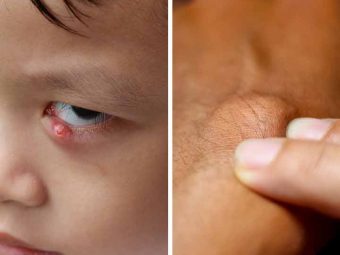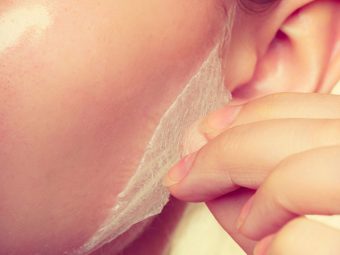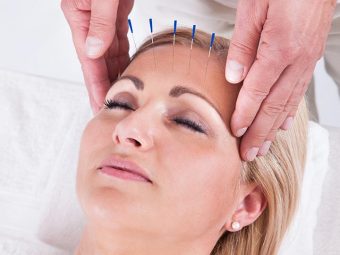[ad_1]
Many people experience constant allergic reactions without knowing their cause. Allergies are a condition in which the immune system reacts abnormally to a foreign substance. To figure out which allergen you are reacting to, you need to go for a skin allergy test. Skin allergy tests help you identify the cause by exposing your skin to potential allergens. Based on the results, your doctor can suggest a treatment plan.
This article will all your questions regarding skin allergy tests. Scroll down to know more!
What Is An Allergy Skin Test?
An allergy skin test helps you identify the cause of your allergy. According to Dr. Wong Soon Tee, a consultant dermatologist, “An allergy skin test is a gold standard in determining what substance a person is allergic to. It is used in addition to medical history to form an accurate allergy diagnosis.”
Different allergens – like mold, pet dander, bee stings, and peanuts – cause allergic reactions in people. The reaction may take the form of a rash, itchiness, breathing difficulty, nausea, etc. To avoid these allergic reactions, you need to undergo allergy tests. Skin testing is one of the most reliable forms of allergy testing. It is a rapid, sensitive, specific, safe, and relatively inexpensive test (1).
A concentrated liquid form of common allergens is used to perform this test. Your doctor identifies the allergen by exposing your skin to the allergens.
These tests help diagnose allergic conditions and develop treatment plans. You can get a skin test done if you feel the rash or itchiness you are experiencing is the result of an allergy. Read on to learn about the various symptoms that may warrant a skin allergy test.
When Should You Get A Skin Allergy Test?
Allergic skin testing helps diagnose a variety of health issues like hay fever, asthma, dermatitis, food allergies, penicillin allergy, bee venom allergy, etc. The common symptoms of an allergic reaction include:
- Headache
- Breathing trouble, wheezing, or chronic cough
- Itchiness or rash
- Watery eyes
- Sore throat
- Swelling of the face, lips, or tongue
- Chest or throat tightness
- Nausea and vomiting
- Abdominal pain and cramps
- Pale skin
- Weak pulse
- Dizziness
Though skin tests are usually safe for adults and infants, your doctor may advise against them if you are:
- Very sensitive to certain substances.
- Taking medications that may interfere with test results, like antihistamines, antidepressants, and heartburn medications.
- Have a severe skin condition like eczema or psoriasis.
Some tests detect immediate allergic reactions, and others detect delayed reactions. Check out the next section to learn about the different types of skin allergy tests.
What Are The Types Of Skin Allergy Tests?
- Skin Prick Test: It is the most common allergy test (2). It identifies allergies to pollen, mold, pet dander, dust mites, and foods. In this test, your skin is pricked with 10-50 potential allergens. Another way it is done involves leavingthe allergen extract on your skin after lightly puncturing the area so that the liquid enters your skin. You may notice reactions within 10-15 minutes of exposure. You may develop a rash or raised round spots (called wheals) if you are allergic to any substance.
- Patch Test: A patch test determines the cause of skin allergies like contact dermatitis. The patch with the allergen is kept on your skin with a bandage for 48 hours (3). It is removed to check for a rash or any other reactions. It helps you detect delayed allergic reactions. You may be exposed to 20-30 extracts of potential allergens during this test.
- Intradermal Skin Test: In the intradermal skin test, small amounts of the allergen are injected into the outer layer of the The area is examined after 15 minutes for any reactions. It is often performed when the skin prick test results are inconclusive (3). This test is recommended for airborne irritants, medications, and insect stings.
Skin allergy tests are safe and minimally invasive. However, you should know how to prepare yourself before going for one of them. Learn how to do that in the next section.
How To Prepare For Skin Allergy Testing
Before performing a skin allergy test, your doctor may ask for your medical history, signs and symptoms, and how you usually treat them. These will help the doctor determine if allergies run in your family or if it is an allergic reaction or something else. The doctor may physically examine you to analyze additional causes and symptoms.
Stop taking medications like antihistamines 7 days before the test (1). “Before having an allergy skin test, talk to your allergist or doctor about all your current prescription and over-the-counter medications to find out what medications can interfere with your test,” adds Dr. Wong Soon Tee. These medicines can stop your immune system’s response to allergens and affect the results.
Follow your doctor’s instructions carefully for better results. If you still have doubts about the test, keep reading to learn more about what to expect during the test.
What Should You Expect During A Skin Allergy Test?
Your doctor will perform the test based on your symptoms. Your body will show reactions at the test site if you are allergic to any allergens. The clinician will record all the observations of the test. You may have mild symptoms like itchy skin, watery eyes, or congestion. “The prick test and intradermal tests may hurt a little. You should also expect an itch where the allergens were placed if you are sensitive to any of the allergens,” Dr. Wong Soon Tee adds.
Your symptoms may clear up in one or two hours after the test.
Allergy skin tests are safe because only a small amount of allergens are placed on your skin. However, you will have to take necessary after-care measures. Keep reading to learn about what you need to do.
What Should You Do After A Skin Allergy Test?
The marks or itching from the test fade away in a few hours. You may use a mild cortisone cream to reduce itching. If it is a patch test, do not wet the bandage area.
If the test results are not clear, your doctor may recommend more tests. Once you know your triggers, your doctor can start the treatment plan accordingly. You may be prescribed medicines to control your symptoms.
While these tests are safe, there are still some potential adverse reactions that you should be aware of. Find out more in the next section.
Risks And Side Effects Of Skin Allergy Testing
The biggest risk involved in skin allergy tests is the possibility of an anaphylaxis reaction. However, you don’t need to worry as your medical provider will be prepared to treat it. You may require emergency care if you experience a severe reaction during an allergy test.
Intradermal skin testing has a higher risk of anaphylaxis due to the higher concentration of allergens (3). When an allergen is introduced to the skin, mast cells may cause more than a local reaction.
The Final Takeaway
Allergy skin tests are safe and minimally invasive. There are several types of skin allergy tests, and your doctor will choose one based on your symptoms and triggers. In most cases, the test results are accurate in finding the allergen. But, sometimes, there is a chance of an inconclusive result and, your doctor may prescribe more tests to determine the allergen. A positive test result helps the doctor out what you are allergic to and plan your treatment accordingly.
Frequently Asked Questions
Can I do an allergy skin test at home?
“Although performing skin testing at home is convenient, the results are not always reliable, and there are also rare cases of emergency that require prompt medical action,” Dr. Wong Soon Tee says.
Can pregnant women take skin allergy tests?
It may be difficult to treat any adverse effects caused by skin allergy tests in pregnant women (3). They may undergo serum IgE testing instead.
What age is appropriate for skin allergy testing?
Allergy skin tests can be done at any age. Babies older than 6 months can take skin allergy tests.
Key Takeaways
- Skin testing is a rapid, sensitive, specific, safe, and relatively inexpensive form of allergy testing.
- Headache, breathing trouble, wheezing, chronic cough, itchiness or rash, watery eyes are a few symptoms of allergic reaction.
- The possibility of anaphylaxis reaction is the biggest risk involved in skin allergy tests.
Sources
Articles on StyleCraze are backed by verified information from peer-reviewed and academic research papers, reputed organizations, research institutions, and medical associations to ensure accuracy and relevance. Read our editorial policy to learn more.
- Appropriate Allergy Testing And Interpretation
https://www.ncbi.nlm.nih.gov/labs/pmc/articles/PMC6188374/ - The Skin Prick Test
https://pubmed.ncbi.nlm.nih.gov/29552869/ - Allergy Testing
https://www.ncbi.nlm.nih.gov/books/NBK537020/
Related
LATEST ARTICLES
[ad_2]

















